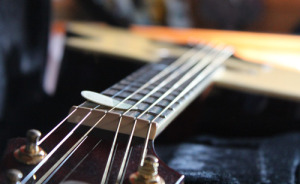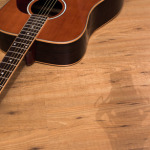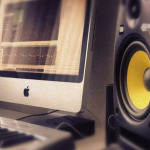 I want you to make the best possible recordings you can. One way to get better is to have a method and stick to it. That’s why, here at R64, I’m trying to give you some real tips you can follow that will get you to making better music starting today!
I want you to make the best possible recordings you can. One way to get better is to have a method and stick to it. That’s why, here at R64, I’m trying to give you some real tips you can follow that will get you to making better music starting today!
In this specific case, we’re dealing with the recording process of the acoustic guitar. Since you’ll likely have to record it at some point, spend 5 minutes of your life learning the steps that’ll make your job smoother.
If you missed the first segment of this mini-series, go check out the first essential steps now. Then come back there and read on mate!
Mike It Up!
Once you really know what you are going to capture, decide on the microphone and place it. As a rule of thumb, positioning the microphone around the 12th fret, roughly 1 feet apart, should be a good starting point.
If you only got your first studio condenser microphone, that will do the task pretty well. You don’t need to spend more money.
However, if you already have some options to choose from, take this few lines into consideration when deciding your cup of tea. Be aware that large diaphragm condensers will capture a lot of bass, especially when positioned very close to the guitar. On the other side, small diaphragm condenser offer a higher level of detail and a bit rolloff in the low end.
Some stereo techniques are worth considering but are not essential. They’ll give your guitar a fuller and wider sound, which may be a great thing for a folk ballad with just guitar and vocal, but may not be that good if your acoustic guitar is going to be surrounded by a full band arrangement. That’s the case when a mono technique might be better.
Don’t forget that you can even mike up your acoustic guitar with a dynamic microphone, like a humble SM57. The mids-focused tone of that microphone might just be the thing you’re looking for to making your acoustic cut thru a crowded pop song.
Record Something And Listen Back
Now record some takes and then listen back on your studio monitors, then decide if you need to move something. You won’t need to record as hot as you can. That’s just a bad misconception. Don’t let the meters fool you and keep your gain low.
Like I’m suggesting in my eBook, don’t try every possible combination; limit yourself. If you followed the steps above, you’ll be done with just a few takes. No need for “more”!
In The End, It’s All About Practice
Unfortunately, this post by itself is not going to automatically give you perfect acoustic guitar recordings. It’s up to you to apply the rules I’m suggesting (which work, I can guaranteed it!), experiment with your room, guitar and microphones, and be ready for a lot of trials and errors.
I’m always learning new things by just applying these simple concepts every single time, and you should too! Once you have the method (and now you have it), practice and time are the only things that will get you to master the art of recording your acoustic guitar.
To begin with, I want to challenge you to apply the concepts above in the next days, record something and share your take here on the blog! It would be great to hear something from you!
–
If you want to get some more insights on microphones and their placement, as well as other useful mindsets to face your recordings, make sure to check out my eBook “The Recording Roadmap”.
Get your FREE copy here!





